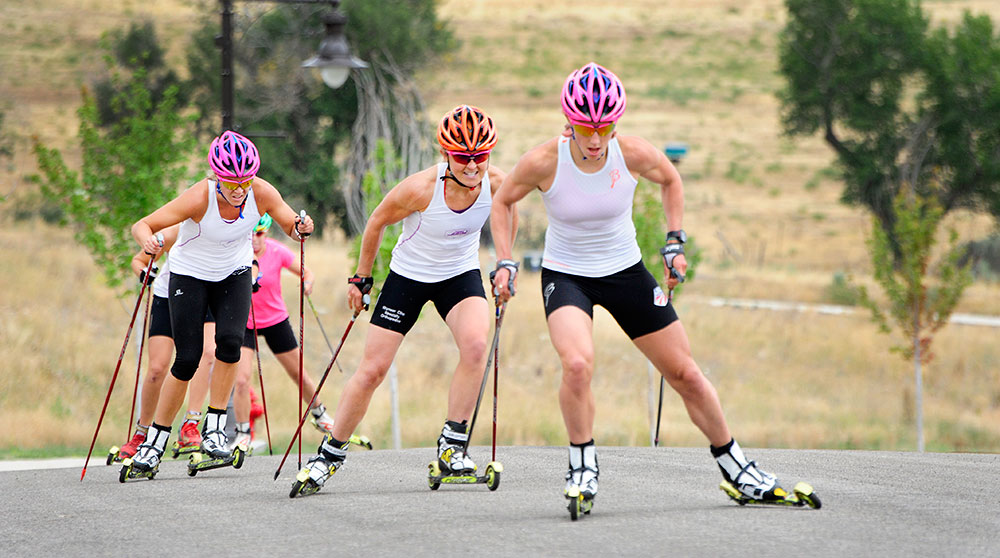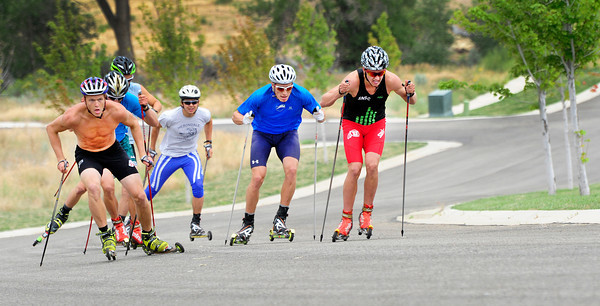
In preparation for three premier events being held at high-altitude venues this winter, the Alaska Pacific University (APU) Elite Team spent two weeks this month training 7,000 feet above sea level in and around Park City, Utah. With nearly a dozen athletes, the team slept another 1,000 feet higher at Deer Valley Resort.
Whether their focus for the season is on U.S. Nationals at Soldier Hollow in Midway, Utah, Junior and U23 World Championships in Val di Fiemme, Italy, or the Olympics in Sochi, Russia, the athletes that attended the camp are hoping the exposure to thin air will give them an edge their sea-level base in Anchorage can’t provide.

“Hopefully we’ll go home and feel pretty good, just with the increase in oxygen,” APU and U.S. Ski Team (USST) member Holly Brooks said in a phone interview on Aug. 24, the final day of camp. “Hopefully we’ll have some good interval sessions in the next two weeks while we still have the boost from altitude.”
The higher the altitude, the less oxygen molecules in the air, which working muscles require to function at their best. In order to compensate, the body produces extra red blood cells to deliver oxygen to the muscles. When the athlete returns to lower elevation, the extra red blood cells will remain in their system for 10 to 20 additional days, providing a natural, legal boost in performance.
“Whether it’s the altitude or not, I think everyone here has gotten two weeks of incredible training,” Brooks said. “It’s hard to say from a physiological standpoint, but I think it’s been a really productive camp either way.”
The camp marked a shift in the athletes’ training cycles from the base-volume period to intensity leading up to the season-opening races. They will continue adding faster intervals and time trials back in Anchorage before returning to Park City for three more weeks in October. The non-Alaskan USST members will be at an intensity camp in Lake Placid, N.Y., for the first two weeks of September.

“Now it’s the time to kind of get fast,” Brooks quipped. “This camp was kind of the first time that we’ve seen a big dose of Level 4.”
Though the next trip to Park City will be an official USST camp, several club teams including APU will take over the roads and trails, including the freshly laid pavement on the Soldier Hollow race courses.
APU skiers are able to train at a moderate altitude (about 5,000 feet) on Eagle Glacier in Alaska, but Brooks said this is significantly more time at altitude than her typical annual training plan prescribes. Glacier camps typically last about a week, as food and other supplies have to be flown in by helicopter.
The altitude at World Cup venues tops out at around 4,500 feet, Brooks said, which is Sochi’s elevation. With the stakes raised this year, athletes are hoping to be acclimated to the change in environment well in advance of the events they have invested so many training hours in.
Brooks likes the Americans’ chances racing at altitude. When the national team arrives in Park City, the skiers stop in at the U.S. Ski Association’s Center of Excellence, where they undergo hemoglobin-mass tests, which is compared to a second measurement later in the camp to analyze their body’s response to the change in altitude. Brooks said she and her USST teammates typically test very well.
“Generally, I really like altitude,” Brooks said. “Hopefully Sochi will be good and we’ll be prepared for it.”
Steven McCarthy
Steven McCarthy discovered a passion for sportswriting in the classrooms of the University of Maine school of journalism. He earned his Bachelor's degree in 2010, while complementing his studies covering two years of UMaine sports and summer college baseball on Cape Cod. He resides in southern Maine and works in a private school for kids with autism. In his spare time he's training for his next marathon (running or skiing) or coaching at a local high school.



